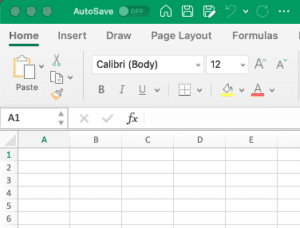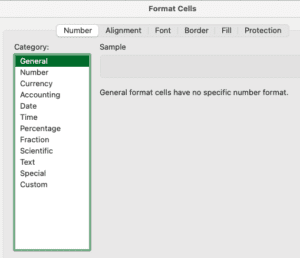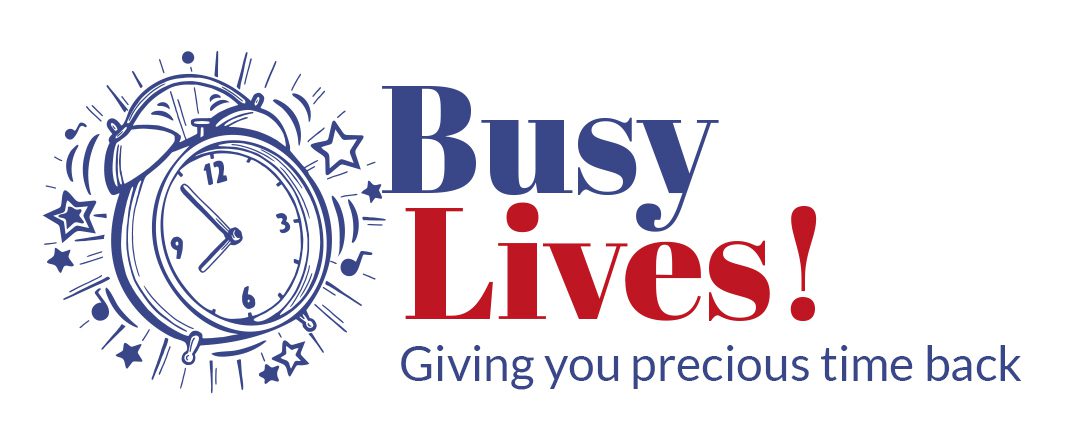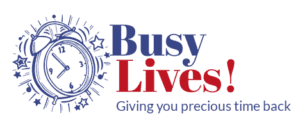
Feb 21, 2022 | BUSINESS SUPPORT, FINANCE
I understand invoicing is the bane of many small business owners lives and for that reason, it is no surprise invoicing is one of the most common tasks regular clients choose to outsource to Busy Lives!
Ensuring you send invoices and get paid on time is the life blood of any business, but it does require a regular time commitment and a focused follow-up. During the past few years, businesses have been reluctant to chase overdue invoices as frequently as pre-pandemic, but this is starting to change now.
Having used many different invoicing programmes such as Xero, QuickBooks, Excel etc. I have picked up some great tips along the way to support businesses with their invoicing needs and I will be sharing in this blog:
My Top Tips are:
- Depending on the size and nature of your business, I would recommend you always invoice your clients either weekly or monthly. Always on the same date / day to ensure easy payment.
- Always use the date you did the work, not the date you’re generating the invoice.
- Ensuring invoices are paid on time is crucial when running a small business, to mitigate the risk of late payments make sure your payment terms and due date are clear and your invoices are completed fully. I regularly review my clients’ invoices to ensure compliance.
- State your preferred method of payment (such as direct debit or the fact you do not accept credit cards). Be clear & reduce issues further down the line.
- Avoid confusion on both ends by requesting clients uses their invoice number when paying electronically, this will minimise the need for you to trawl through your online banking, saving you precious time.
- Always ask the client who the invoice should be addressed and sent to, when dealing with other businesses this may not always be the Director and may need a purchase order number adding.
- Provide as much information as you can to your customers when generating an invoice, be clear with exactly what you are charging them for to reduce confusion that could lead to late payments and time wasted with clients querying their invoices.
- If you charge VAT, double check the software you’re using is taking this into account and is charging the correct rate as this human error is often made when using automatic invoicing software to save time.
- Most importantly and the one many small business owners shy away from is, do not be afraid to chase the payment! Both as Xero and QuickBooks have the option to send automatic reminder emails. If clients fail to respond to those emails, pick up the phone.
- Ensuring you keep a secure record of all the invoices you generate for HRMC to save time when filing your financial accounts and tax return
After many years of clients outsourcing their invoicing to Busy Lives! I also have some great ways I can help clients improve their invoicing process for those outsourcing their invoices for the first time:
- Create a clear and consistent key of all your service areas by assigning a letter to each one, this will save you and the person managing your outsourced invoicing time and confusion.
- I can help you create an easy-to-use table to streamline all your invoices showing the service their receive and the amount to be invoiced and their payment terms if they vary Again, this saves time for the business owner.
- Keep detailed monthly stats on who pays you via direct debit and who pays on time / late. I regularly provide my clients with detailed stats highlighting key trends, average order values and the most popular services being used.
- Use data to ensure you can make decisions about your business – are you receiving the income you need? I provide regular tracking data to help you track and measure your invoices. Clients find this useful and something they would not have the time to do.
- Don’t forget to send reminders and chase for payment. I always help clients to successful chase debts by creating a 3-stage process and email communications to help ensure invoices get paid. You would be surprised how many don’t like chasing but with simple, friendly communication it can really work wonders.
I manage invoicing for a busy Marketing Agency in the East Midlands, and this is what she had to say about my work
“Karen has a very keen eye for detail and has helped set up and implement some procedures into the business around invoicing, all saving time and money. Highly recommended!”
Using the tips mentioned above to either manage or outsource your invoicing will allow you to save precious time! If you would like to learn more about how outsourcing your invoicing can save you time call Busy Lives! 07565 722 031.
Alternatively, you can drop me a message on LinkedIn / Messenger on Facebook or email: karen@busylivesnottingham.co.uk to discuss your requirements!

Mar 21, 2021 | BUSINESS SUPPORT, FINANCE
Using excel to track your finances – 1
The beauty of Microsoft eExcel is that you can tailor it precisely to what you want it to do and your level of skill. I have a file for each financial year for Busy Lives! and a separate one for the cost of living, which believe it or not I set up in 1994!
This is the first in a series of Excel finance blog posts. It explains how to use some of the simple controls to be able to create, use and track your own finances on excel.
The second post will explain how to insert simple formula, filter information and dropdown lists. Last but not least, the third post will be how to use and show data in charts and graphs.
Overview
-
What sheets to create & why
-
Having a professional look
-
Shortcut keys & Freezing panes
-
Formatting a column to present data the same way
-
How Busy Lives! can help & support you with this
What sheets to create for your business finances
A good rule with excel is to only have a sheet if you really need it to inform your business. Here are the main sheets I have both used myself and created my clients:
- Annual Expenditure
- Car Related Expenditure
- 12-month Cash Forecast
- Expenditure / Expenditure (Client) / Expenditure (VAT)
- Bank Statements
- Income Invoices / Income Invoices (Client)
- Client Analysis
- Thank you
If you sell items I would also suggest / incorporate:
- Profit Margins
- Stock Levels
- Client Ordering
Why
Annual Expenditure – I find this sheet useful to both track and predict how prices increase year on year, along with where my money is going.
12-month Cash Forecast – This has a formula built in which will automatically add your totals up each month showing at a glance what your currently income, expenditure and bank balance is. I find this sheet is really good where have one-off large expenditure occurring in different months such as business insurance and tax. (Blog Post 2 will show you how)
Expenditure (General)/ Expenditure (Client) – This sheet needs to be set up to reflect how your business runs. For example:
- Busy Lives! – the vast majority of what I buy is for just my business and I don’t earn enough to be VAT registered.
- The BlG Blue Hat Gardening Services – expenditure reflects a combination of tools bought for the business and materials such as plants, gravel and compost for customers. This sheet is set up so that you can see the overall expenditure, the actual business expenditure and what needs to be claimed from the customer.
Car Related – I like to keep this separate. Personal choice.
Bank Statements – It’s good to have a tracking overview to see the movement of monies in and out of your account as opposed to just the month you’re in when you view your statement.
Income Invoices / Income Invoices (Client) – Like the expenditure option above, set it up to reflect your type of business.
Client Analysis – My favourite sheet which really gives me an insight into the business. It has a variety formula in it which will populate graphs as you add to it each month.
Thank you – A useful quick reminder to ensure I follow through and say thank you to my existing clients.
Having a professional look
Adding the little things can make a world of difference to your spread sheet, here are my favourite top three:
- Colour each sheet tab and give each sheet a name – right click with the cursor over the word ‘Sheet1’ and you will see the option to Rename and Tab Colour. I often use the business brand colours!
- Have the same font and size on all your sheets – select the box between ‘1’ and ‘A’ then select the font and size you wish to use. I usually use Aerial, size 11 on excel.
- Make you headings and titles stand out by filling the cell with colour and making the font size slightly bigger – select the cells with your heading in and use the fill option which is directly under the size. Again, why not use your brand colours.
Shortcut keys & Freezing panes
Shortcut keys
The following keyboard shortcut keys can be used not just with excel but across all Microsoft Office Applications. These are the ones which I find really useful:
- ‘Ctrl A’ – to select everything in the document press Ctrl A.
- ‘Ctrl C’ – to copy – highlight what you want to copy then press these two keys.
- ‘Ctrl V’ – to paste – select the cell or area you want to paste the copied information in, then press these two keys.
- ‘Ctrl B’ – make wording / digits bold – highlight any text / digits you wish to make bold and then press these two keys.
- ‘Ctrl U’ – to underline – highlight any text you wish to underline and press these two keys.
- ‘Ctrl I’ – for Italics – highlight any text you wish change to italics and press these two keys.
 Freezing Panes
Freezing Panes
Freezing panes is another expression for locking multiple rows and columns. It’s really useful to have when you have lots of entries, as it enables you to still be able to see the headings.
From the heading ribbon at the top of the excel file select ‘View’ and you will see the options for you to select to freeze multiple panes, just the top row or just the first column.
To lock multiple columns, select the column to the right of the last column you want frozen, choose the View tab, and then click Freeze Panes.
Formatting a column to present data the same way
You can set up the columns in excel for different purposes. For instance, on my Expenditure sheet I need a column to show the date, a column to show the price including the price sign, and a column to give me the option of the different allowable expense areas. This is done through formatting the cells.
Select the column you wish to format. Right click either your mouse / scroll pad and you will see the option to ‘Format Cells’ click on this. You now have a set options to select from.

My top three common ones I always use are:
Date – select the option that suits you I always like the date, month and year as digits.
Accounting – so the pound sign always automatically shows and has the same number of digits after the decimal point.
Text – where you want to insert phone numbers and have the ‘0’ showing at the beginning.
How Busy Lives! can help & support you with this
Busy Lives! was created when I left a busy career that left me time poor and unable to give sufficient priority to what really mattered to me. I now provide a wide range of business support for people in that position or are wanting to start their own business.
I am happy to help by:
- Teaching you how to use excel for yourself at a pace and time to suit you.
- Setting up a bespoke financial year excel template for reflecting your business needs.
- Entering all your finance invoices, bills and receipts for you as and when you need support. (This can be on Excel, QuickBooks or Xero)
- Analyse your data on a monthly basis and produce a summary of the key headlines in a report. This will help you recognise trends and areas within your business to help it grow in the future.
- Setting up an easy system for your filing all your financial paperwork and receipts.
Find out more about my Small Business Support Services – Click Here
Let you help you gain precious time back. Ring Busy Lives! 07565 722 031
Drop me a message on this website, LinkedIn or Messenger on Facebook
Or Email: karen@busylivesnottingham.co.uk


Mar 21, 2020 | FINANCE
Preparing for the New Financial Year
Unless you use one of the accounting software packages that takes and uploads the photographs of all your expenditure receipts and invoices, you are still required by HRMC to keep paper records of all these for 6 years. This is regardless if you are a Sole Trader or Limited Company. In this blog post I share how I organise my paperwork for this and also keep track of everything financially on Microsoft Excel.
Receipts more than your invoices tend to make the most mess or get lost! They are all different sizes and find their way into your pockets or bag at random times. The main reason they get ‘shoved’ somewhere impractical is that there isn’t an easy system in place to file them effectively.
Likewise with paperwork, if there isn’t a system in place that’s easy to access it often just goes in a pile of other papers you have which becomes lost, thrown or shoved in a draw as you don’t know where to put it.
What follows is a simple and quick way to stay on top of your business financial filing.
Overview
-
What you need
-
Setting up for your folder New Financial Year
-
Setting up excel to track your income and expenditure for the New Financial Year
-
The way this now works
-
How Busy Lives! can support you with this
-
What you need
You just need four items to gather and you’re set up for the year ahead.
- 1 x A4 Lever Arch folder
- 2 x File Dividers labelled by month
- 12 x A4 Plastic wallets
- 2 x Sheet of bright A4 coloured paper or card
What are the best A4 folders to use?

The type of folder you buy can really make a difference. To a certain extent it will depend on your budget as they range from £2.00 up to £30.00. The most important consideration when purchasing any is to open and close the lever arch mechanism a couple of times and check it closes correctly. If it looks anything like the picture here avoid, as when you go to turn to a specific month all the contents will either become stuck or fall out.
 I often get asked which are the best A4 folders to buy. In terms of the clasp mechanism I would definitely go for an ‘Ergogrip Binder’ as it is the best one I’ve come across for durability and also stays in place on your shelf looking professional and smart.
I often get asked which are the best A4 folders to buy. In terms of the clasp mechanism I would definitely go for an ‘Ergogrip Binder’ as it is the best one I’ve come across for durability and also stays in place on your shelf looking professional and smart.
In terms of Lever Arch, go for one which is a thick PVC which will stand up on its own without falling over. I also like to be able to insert my own label down the spine so that I can update it when it has a new use, without the folder becoming ‘scruffy’ to the eye with writing scrubbed out and new titles written.
What are the best file dividers to use?
There are many types of file divider on the market. Try to avoid the paper ones if possible as they don’t tend to wear well when the folder is used frequently. My preference are these A4 Monthly ones which have a reinforced tab and hole punch spine. They always look as good as when you purchased them and you’re not having to count the months every time like the 1 -12 file dividers to remember which financial month you’re in!
Setting up for your folder New Financial Year
- With one of your sets of file dividers place an A4 plastic wallet after each month in your folder.
- Insert the mixed file dividers and wallets into your folder commencing with April on top and the last three months of the financial year after December.
- Put your coloured card or paper in a plastic wallet on top of this in your folder. You can also print Expenditure on the paper / card if you wish.
- Now put your second set of file dividers on top of this. Again start with April at the top.
- Put your coloured card / paper in a plastic wallet on top of this in your folder. You can also print Income on the paper / card if you wish.
The way this now works

 Income Section – This top section of your folder can now be used for inserting and filing invoices you send each month. I always put the latest dated invoice on top within each month.
Income Section – This top section of your folder can now be used for inserting and filing invoices you send each month. I always put the latest dated invoice on top within each month.
Expenditure Section – File your expenditure invoices within the month of your order, again with the latest date at the top.
Receipts from that month simply go in the plastic wallet behind your invoices.
Top Tip
If you also like to tack both your income and expenditure on excel this is a quick and simple way to ensure you’ve entered everything. I simply highlight the date on invoices and receipts after I’ve entered them onto my excel spreadsheet. Easy and quick cross check!
Setting up excel to track your income and expenditure for the New Financial Year
There are some brilliant digital financial packages out there such as: Zero and QuickBooks. I highly recommend you speak to your accountant as to which package would suit you and your business. If the size of your business doesn’t warrant this and you still use excel to track your income and expenditure you may find the following useful.
Create and name the following sheets giving them a tab colour if you wish:
- Annual Expenditure
- 12 Month Cash Forecast
- Expenditure
- Car Related
- Bank Statements
- Income Invoices
- Client Analysis
- Thank you
The Pictures below show how each of the pages is then set up:


Top Tip
If you are really busy with client work find a regular time each week / month when you can update it.
Alternatively, update the sheet after you send a batch of invoices out to clients or have cross checked against your bank statement for when the money went into the bank.
-
How Busy Lives! can support you with this
Busy Lives! was created when I left a busy career that left me time poor and not able to give sufficient priority to what really mattered to me. I provide services like these for local small businesses and this frees up their time to focus on bringing in greater income for their own business. A ‘win-win!’
I am happy to help by:
- Setting up your financial folders.
- Filing your paperwork and receipts keeping your folders up to date.
- Showing and teaching you how to use excel to manage your finances.
- Letting you have a copy of the excel finance master I’ve created and use with my business.
- Dealing with your invoices, bills and reconcilliation on QuickBooks or Zero on either a weekly or monthly basis.
Let you help you gain precious time back. Ring Busy Lives! 07565 722 031
Drop me a message on LinkedIn / Messenger on Facebook
Or Email: karen@busylivesnottingham.co.uk





 Freezing Panes
Freezing Panes



 I often get asked which are the best A4 folders to buy. In terms of the clasp mechanism I would definitely go for an ‘Ergogrip Binder’ as it is the best one I’ve come across for durability and also stays in place on your shelf looking professional and smart.
I often get asked which are the best A4 folders to buy. In terms of the clasp mechanism I would definitely go for an ‘Ergogrip Binder’ as it is the best one I’ve come across for durability and also stays in place on your shelf looking professional and smart.

 Income Section – This top section of your folder can now be used for inserting and filing invoices you send each month. I always put the latest dated invoice on top within each month.
Income Section – This top section of your folder can now be used for inserting and filing invoices you send each month. I always put the latest dated invoice on top within each month.


